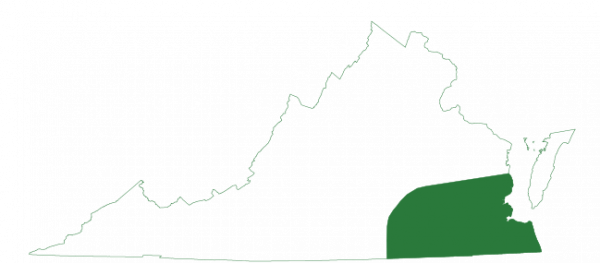
Brown Barking treefrog © Jeff Beane
The spotlight for today’s Frog Friday is on the Barking Treefrog. The largest of Virginia’s treefrogs, the Barking Treefrog ranges in size from 2 to 2-¾ inches in length. The frog can be found in both a gray or green phase, but typically ranges from pale green-gray to a bright green. The back is typically covered with dark circular markings. These markings are variable and can change with the background color of the frog. There is a light stripe that extends along the edge and the belly is white or yellowish white.
Barking Treefrogs are generally found in willow oak-black gum forested wetland and pine savannas in the Coastal Plain. They spend much of their time high among the foliage of trees; they find refuge during hot dry weather by burrowing into sand or beneath roots or clumps of grass. They’re the most active in late spring and early summer when heavy rains trigger their migration to suitable breeding ponds.

Green barking treefrog © Ken Conger
Breeding occurs from May through August in shallow, temporary pools like cypress ponds, sinkholes, and forested depressions. Males arrive at the breeding sites prior to females and begin calling from the treetops to establish calling territories. As females arrive, males move to the water and call while floating on the water’s surface. The characteristic “barking” call which consists of 8–10 syllables resembles the sound of hounds barking in the distance. Females deposit small clusters of eggs that are attached to emergent vegetation and return to their arboreal home within a few days. Depending on temperature, eggs can hatch in a few days and metamorphosis occurs in 45–70 days.
Listen to the Call of the Barking Treefrog:

Barking treefrog range map
Except for two locations in Chesterfield County, this species is know only to occur in the Coastal Plain. The Barking Tree Frog is considered a Tier II species in Virginia’s Wildlife Action Plan. Tier II designation means that population numbers are very small and only occur in a few locations. Conservation efforts for this species should focus on preservation and restoration of suitable breeding habitat in order to maintain a viability of populations in Virginia. Visit the Virginia Wildlife Action Plan website for more information.

